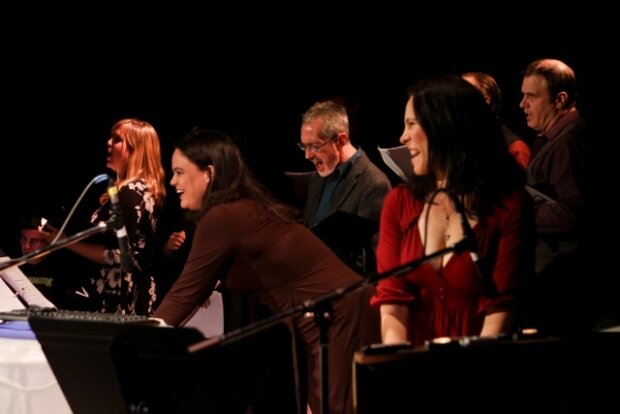The second annual Sandbox One-Act Play Festival opened last night to a packed crowd at Fremont’s West of Lenin theatre. (Read about SOAP Fest Uno here.) Four differing short plays were featured, all using the short play format to advance ideas, in one way or another. And if a particular play doesn’t work, you’re only out 40 minutes of your valuable time, max. It runs through Sunday afternoon.
The first play was called “The Tyrant,” written by Yussel El Guindi and directed by Anita Montgomery. It’s a one-person play with G. Valmont Thomas as Habib, a former Middle Eastern dictator in a United States prison. While SOAP Fest alums have raised the question of whether one-person monologues qualify as theatre (an argument I’m sympathetic to, even when I praise them), “The Tyrant” was compelling to watch for Thomas’s performance alone. I believe he’s the only person of color on stage during SOAP Fest. There are practical, realpolitik discussions that Habib advances, when his monologue is played as a justification for how he governed. It was both the “actor’s tour de force” and “the enlarged lecture,” to borrow terms from Paul Mullin’s important essay on one-act plays. It’s still worth your time to present an alternative to the west-based narrative of US foreign policy. “I’m just a good guy with bad press,” Habib rationalizes in the evening’s most unforgettable line.
There’s no such question whether or not the next play, “Cumulus” qualifies as theatre. The cast of the Rachel Katz Carey directed, Juliet Waller Pruzan written play has eight actors listed in its credits. Sandbox Radio’s benevolent leader Leslie Law plays a flight attendant who must hold three connecting stories together on a flight between Seattle and Denver, with an odd detour to space. Laura Kenny is a woman travelling because her daughter is in a coma and she doesn’t care for her boyfriend Peak. She’s sitting next to a nervous boyfriend (Robert Keene) who wants to surprise propose to his girlfriend Gemma (Kayla Walker) and sneaks on the same plane she’s on. Gemma meanwhile wants to find the gentlest way to leave her boyfriend and flirts a bit with Wilson, whose hands are burned and bandaged. It’s a surprisingly fast-paced production that doesn’t often get bogged down with the drama.
Next up is “iI”, written by K. Brian Neel and directed by Annie Lareau. Three brogrammers are thirty-six hours into a hackathon when one, Mark, thinks he’s discovered artificial intelligence accidentally. Yes, I hate myself for typing that last sentence, but my hands are tied. This accidental creation by Mark (Sam Hagen) has real world implications that the trio must sort out before proceeding. Mark is the only one fully aware of the monster he has created. Is this a recipe for disaster or the ticket to a Wired magazine cover story? “iI” is exactly as enjoyable as a story of a hackathon gone wrong (or right) can be.
The final play has the most tension and is the most intense. Megan Ahiers is wonderful as Annalisa in a story of a married couple who feel like they have nothing to lose when they address their previously-held back grievances with one another. It’s called “Things to Say When It’s Too Late to Say Them, aka Proof You Were Here,” and was written by Brendan Healy and directed by Peter Dylan O’Connor. It’s an unusual anniversary, and Annalisa and Eric (Brian D. Simmons) escalate each complaint they have for each other, it leads to singing country songs, breaking dishes, and arm wrestling, because, why not? The world would be a much different place if that’s how “Who’s Afraid of Virginia Woolf” played out.

